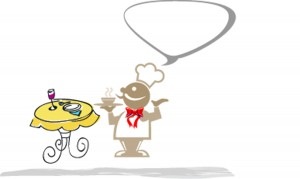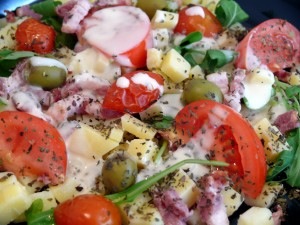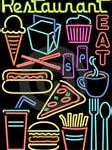 In girth that is. The chef’s weight loss is frequently motivated by a health scare – although sometimes just by vanity or wanting to be more mobile and agile in the kitchen — many star chefs have devised their own plans for losing weight.
In girth that is. The chef’s weight loss is frequently motivated by a health scare – although sometimes just by vanity or wanting to be more mobile and agile in the kitchen — many star chefs have devised their own plans for losing weight.
Fortunately, for them, they have knowledge and their skill in the kitchen at their disposal to make food more flavorful, perhaps downright delicious, while cutting back on the use of sugar, fat, and salt.
What The Slimmed Down Chefs Do
According to an article in The Daily News, what they do is:
- Reengineer their palates: Richard Blais of Top Chef fame followed a vegan diet for 30 days to jump start his 60 pound weight loss. He says it was a palate cleanser that made him aware of how sweet, fatty, and salty his food was. Art Smith, Oprah’s former chef, lost 95 pounds by changing the way he ate – incorporating more whole foods, eating six meals a day, and making uncomplicated food, often following the same menu most days of the week.
- Eat smaller portions: Aside from eating smaller meals more frequently, some chefs like Houston’s Ronnie Killen, who lost 215 pounds, eats four ounces of a 16 ounce steak and saves the rest for another meal.
- Find new ways to add flavor and devise new ways to add taste but not tons of calories: New York City’s Michael Psilakis poaches garlic in olive oil and then adds the garlic to various foods to really punch up the flavor of lower calorie items like mussels and gigante beans. Many of the chefs use onion, garlic, and many herbs and spices for flavor.
- Indulge occasionally (or have a planned cheat day): Many of the chefs, like Art Smith, build in a cheat day or leave room in their calorie budget for the occasional indulgence by eating lighter meals and fewer calories in anticipation of the indulgence.
- Exercise: almost all of the chefs move around more than they did. New York’s Rocco Dispirito became a triathlete, but Art Smith, who has a rigorous workout routine, says he sometimes just blasts music and dances.
The Bottom Line
Whatever routine a chef follows, they all seem to have become aware of portion sizes. They’ve learned about calories and the overabundance of sugar, fat, and salt in many recipes. And, they move more. They do not deprive themselves. They may restrict the amount of food that they eat – but they are eating whole food with good flavor and they’re making room for the occasional, not daily, indulgence.
Art Smith cautions that dessert is a treat. As he says, “If you have dessert every day, then it’s no longer a treat.”
Try following their strategies when you’re cooking at home – or even when ordering in a restaurant.
If we could just get more chefs to offer smaller portions of delicious and healthy whole foods in their restaurants and food companies to do the same with their prepared products it would be a whole lot easier to lose and/or maintain weight and to be mindful of portion size.



